Why you can trust Tom's Hardware
Starting with the 1080p ultra results, the Asus ROG Strix RX 5500 XT O8G Gaming averaged 71.7 frames per second (fps) across all titles. All but three titles—Metro Exodus (37.4 fps), The Division 2 (57.5 fps) and Borderlands 3 (42.6)—are able to run at least 60 fps and provide a smooth gaming experience. AMD’s 5500 XT cards are capable 1080p ultra video cards, but some of the more demanding titles may need reduced settings to reach 60 fps.
Compared to the other 5500 XT cards, the Asus matches the speeds of both 8GB variants. The ASRock Phantom Gaming model averaged 71.9 fps while the Gigabyte Gaming OC 71.3. The difference between them is less than 1%, and for all intents and purposes these run the same speeds. The Asus card ended up 13% faster than the 4GB Sapphire Pulse RX 5500 XT (63.5 fps average).
If we compare performance with competing Nvidia cards, the Asus is almost 4% faster than the notably less expensive Zotac GTX 1650 Super (69.3 average) and close to 7% slower than the comparably priced Zotac GTX 1660 Amp (76.6 fps). Note that the GTX 1660 Super is around 15% faster than the GTX 1660, and sells for around the same price as this Asus 5500 XT card.
Price aside, choosing between these cards won’t be easy as each has their own feature(s) that may be attractive to the user. Unless you play games at 1080p with medium/high settings, be sure to buy an 8GB variant. The Nvidia cards are also a good option, though these Turing based GPUs don’t offer hardware ray tracing and DLSS capabilities to influence the decision. Raw performance and price are going to be two of the main selling points.
The Division 2
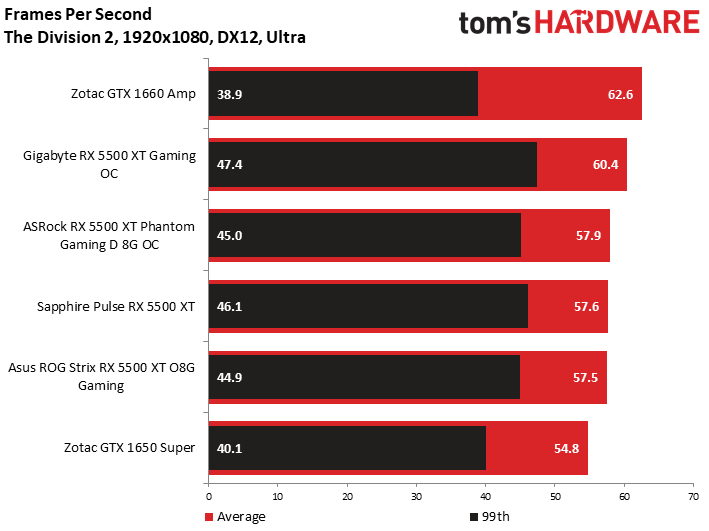
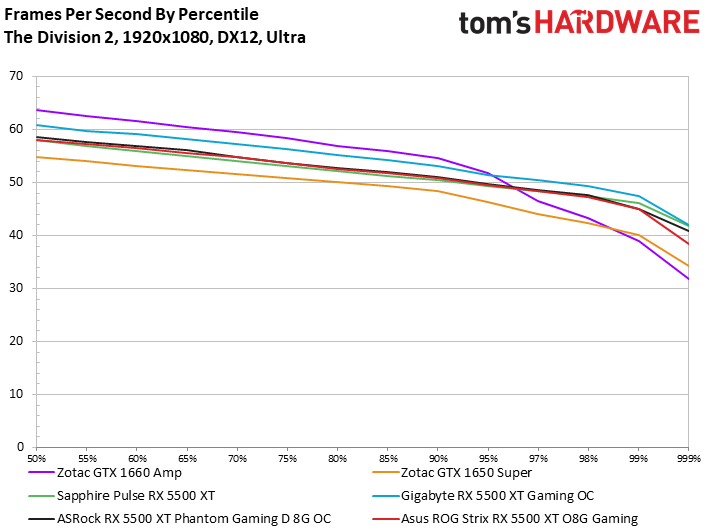
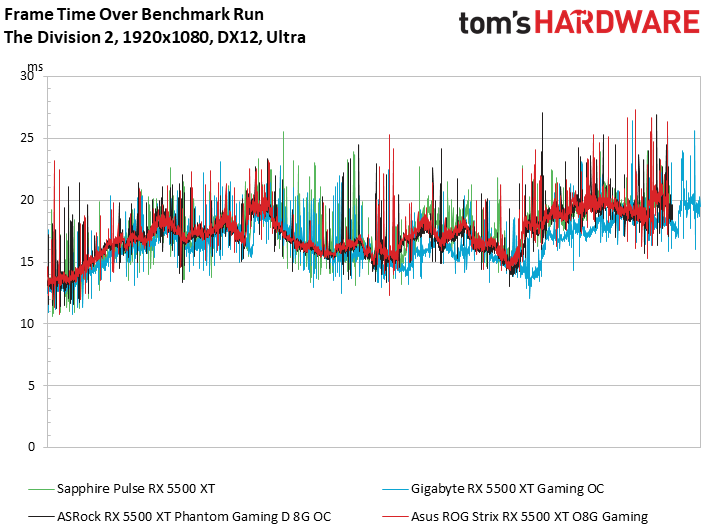
Borderlands 3
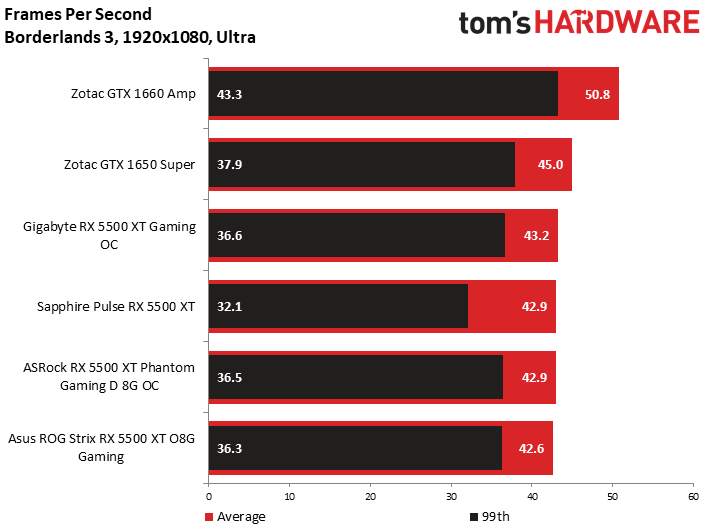
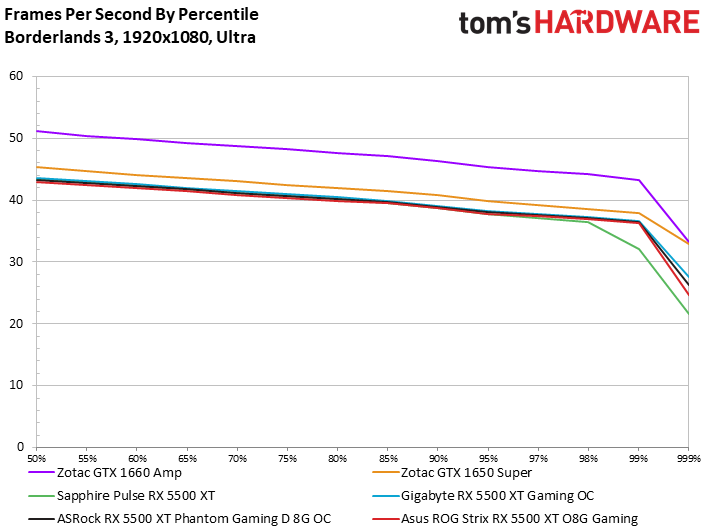
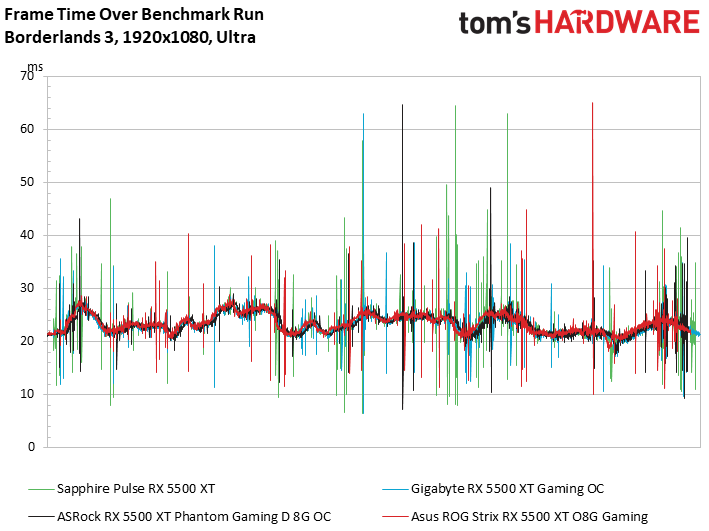
Gears of War 5
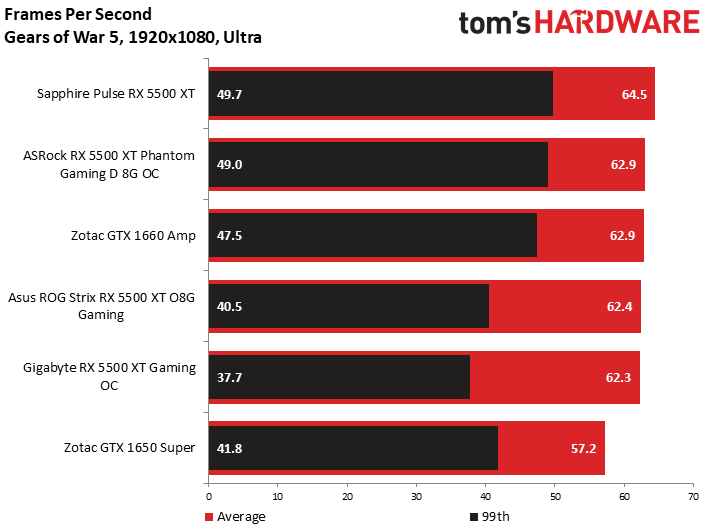
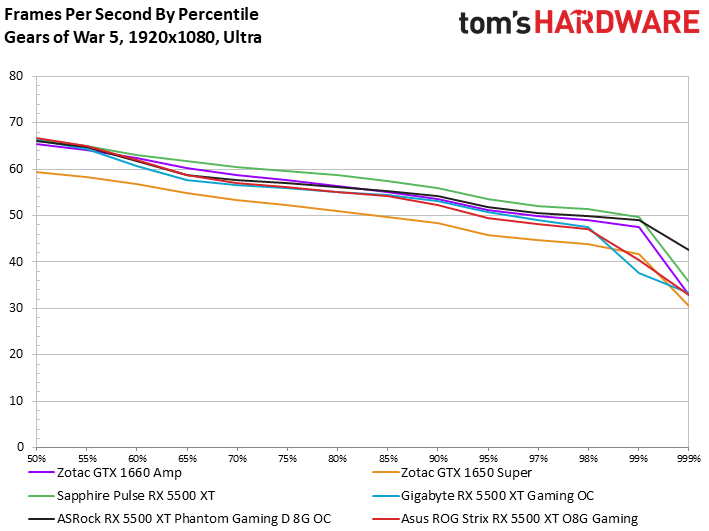
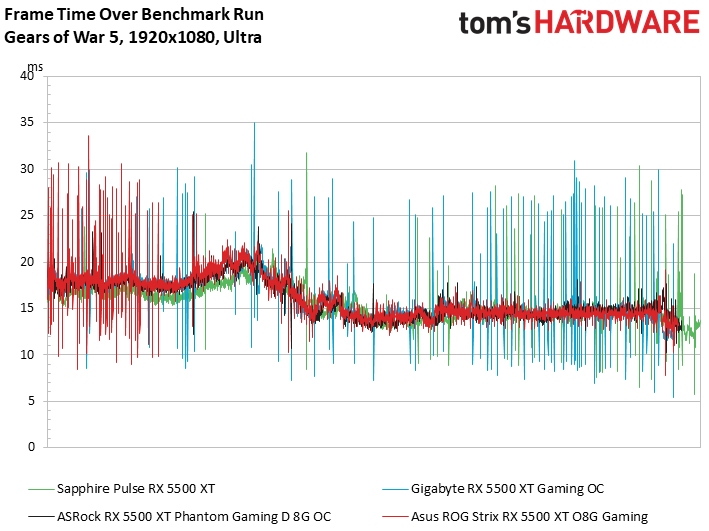
Strange Brigade
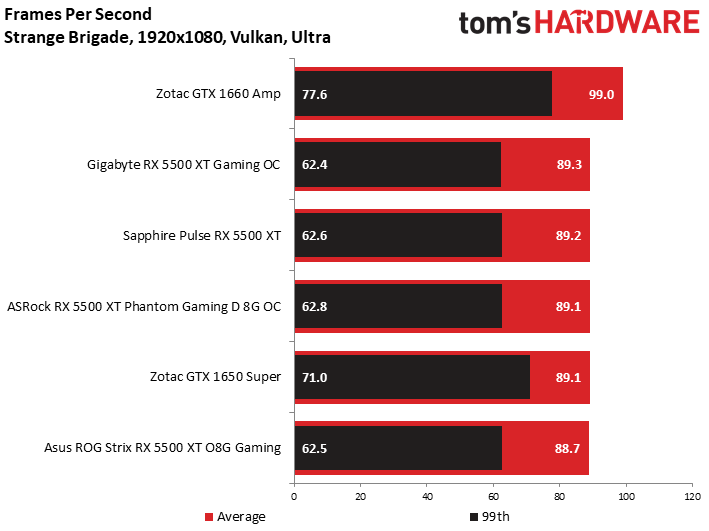
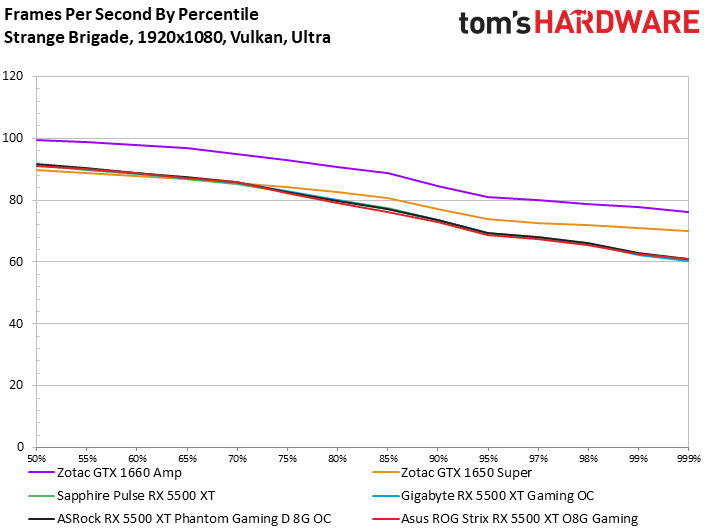
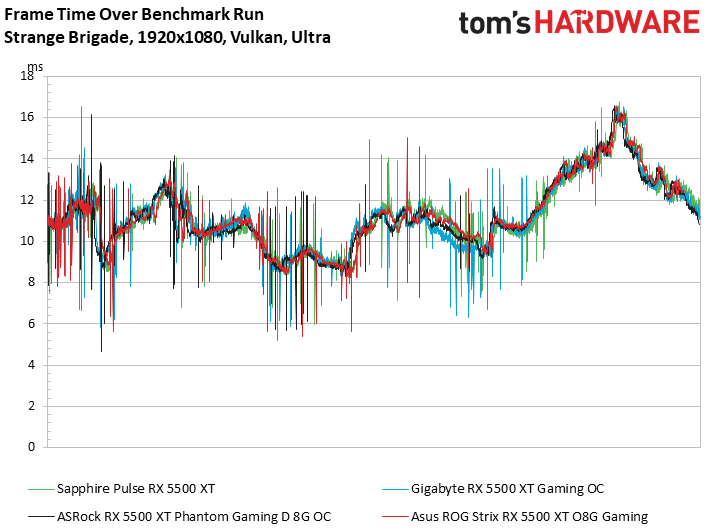
Shadow of the Tomb Raider
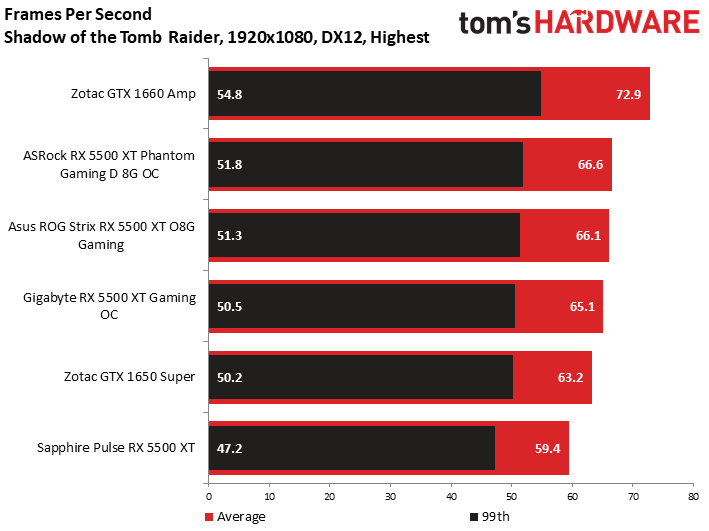
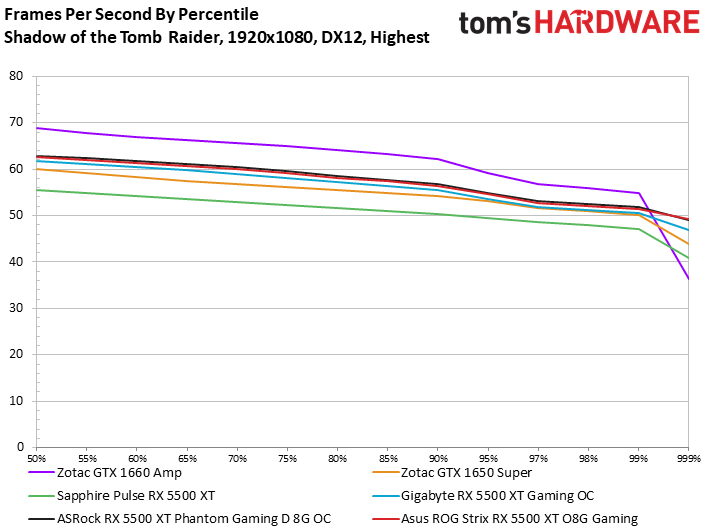
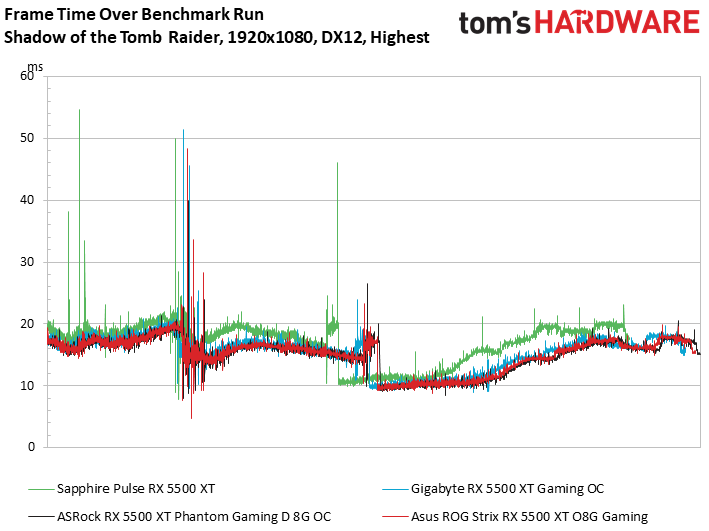
Far Cry 5
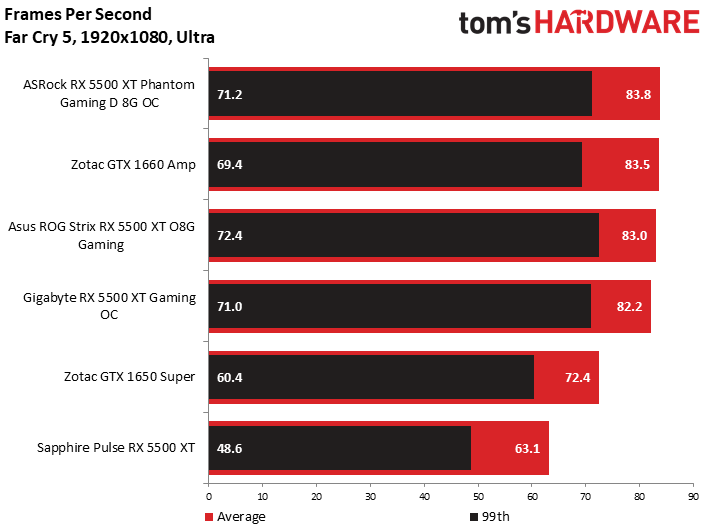
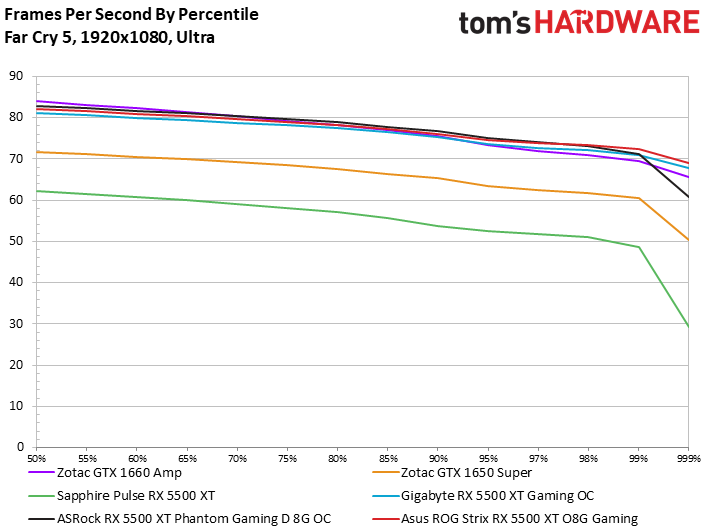
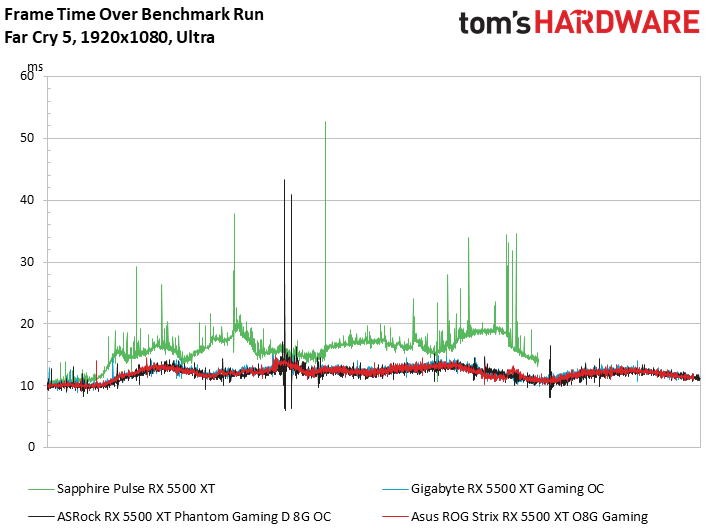
Metro: Exodus
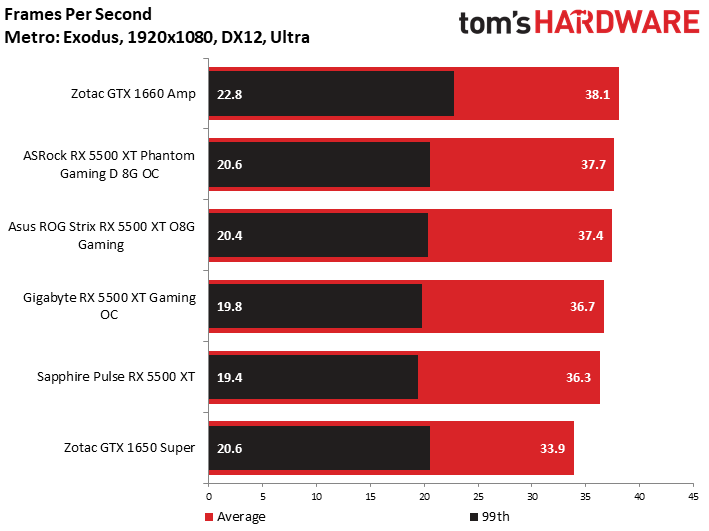
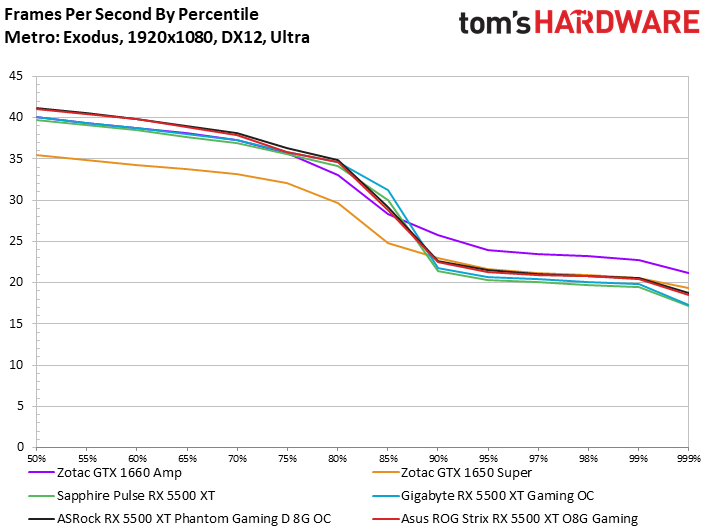
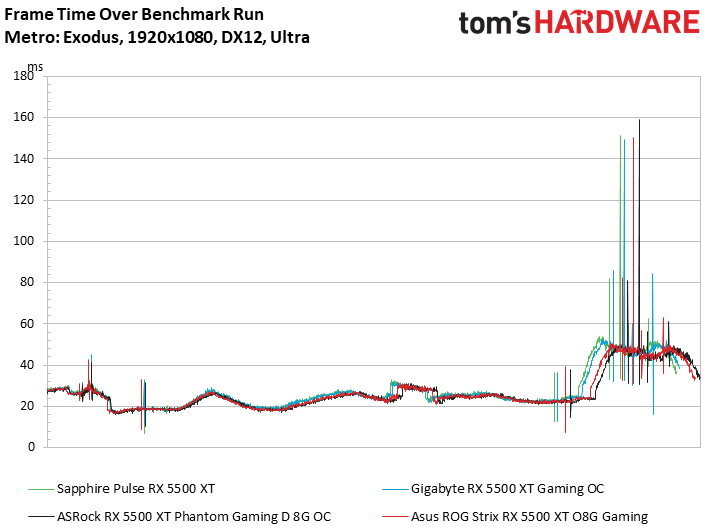
Final Fantasy XIV: Shadowbringers
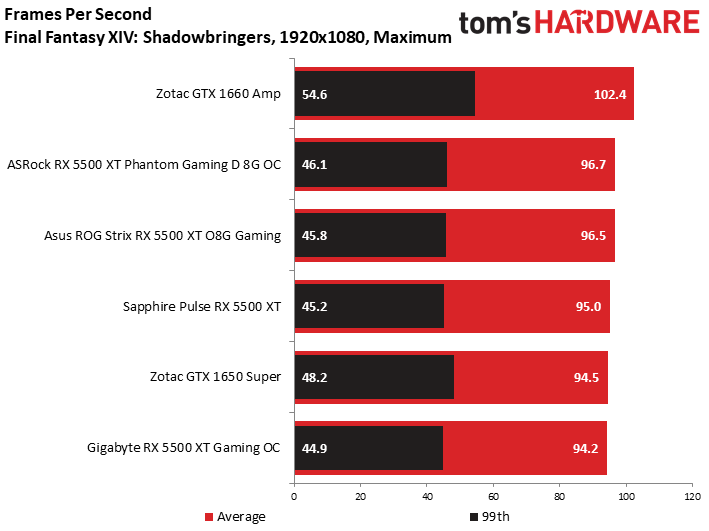
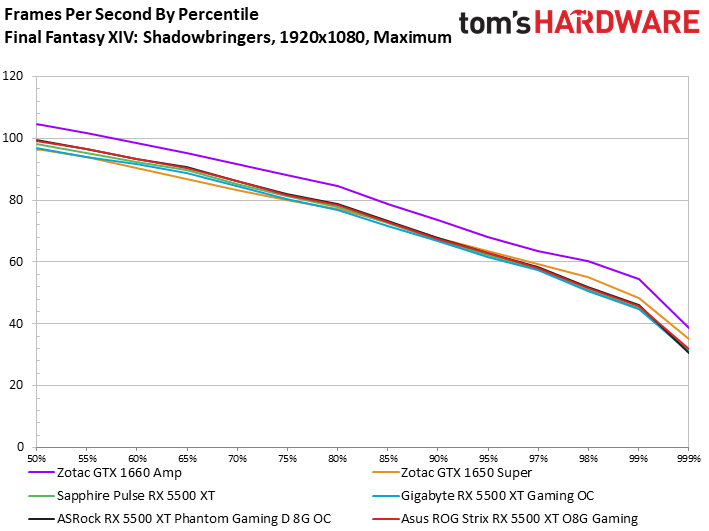
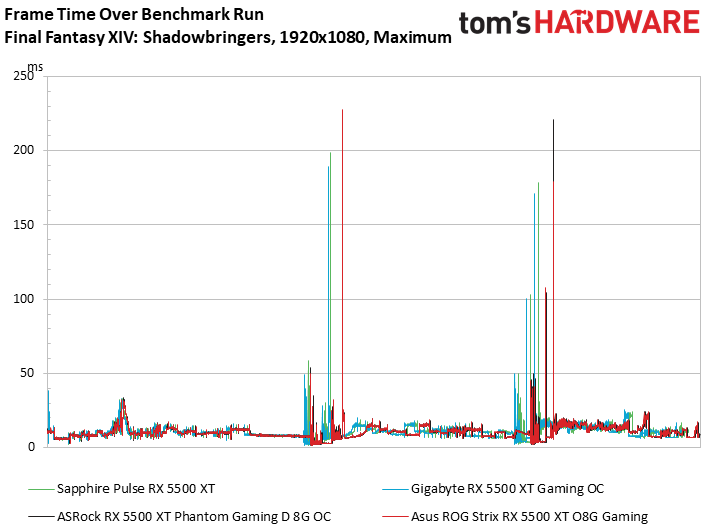
Forza Horizon 4
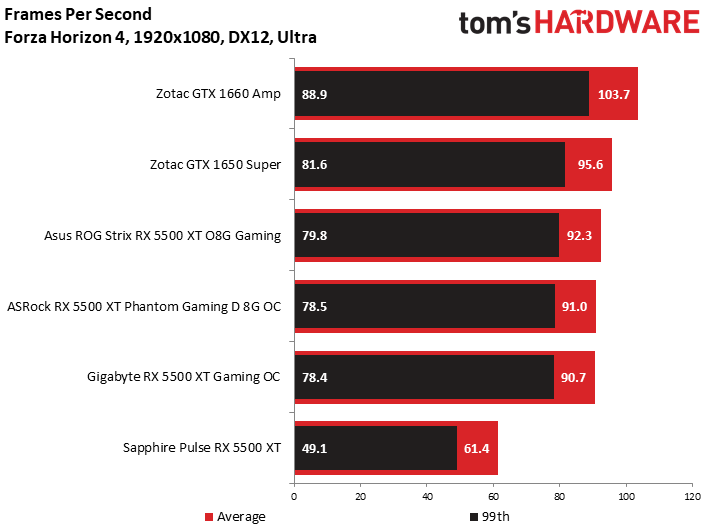
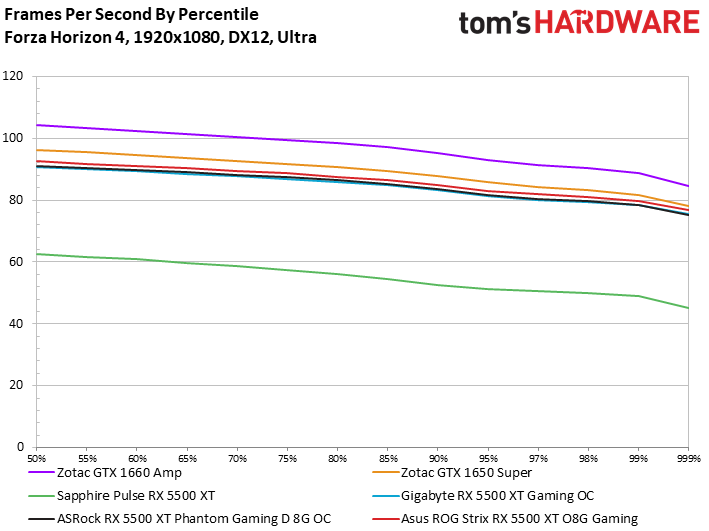
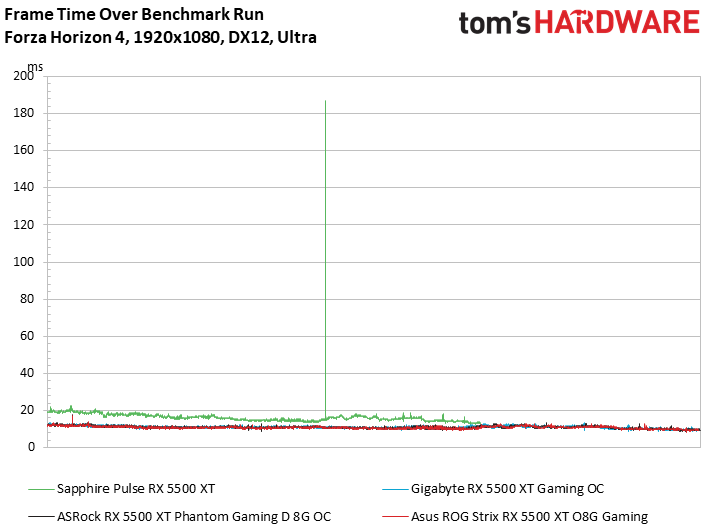
Battlefield V
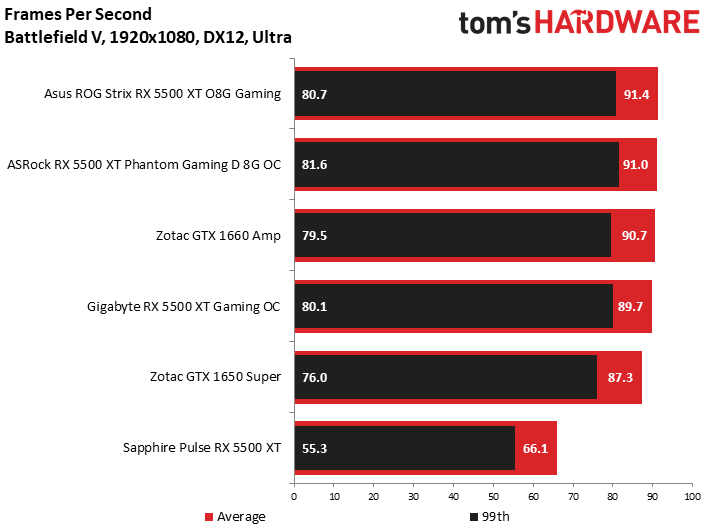
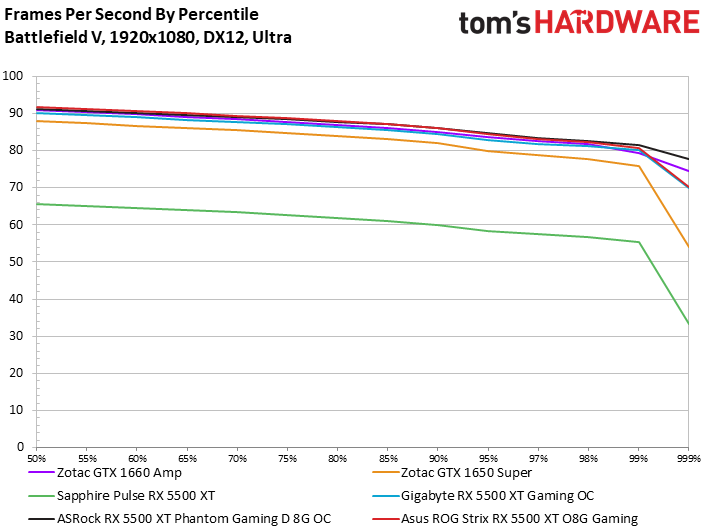
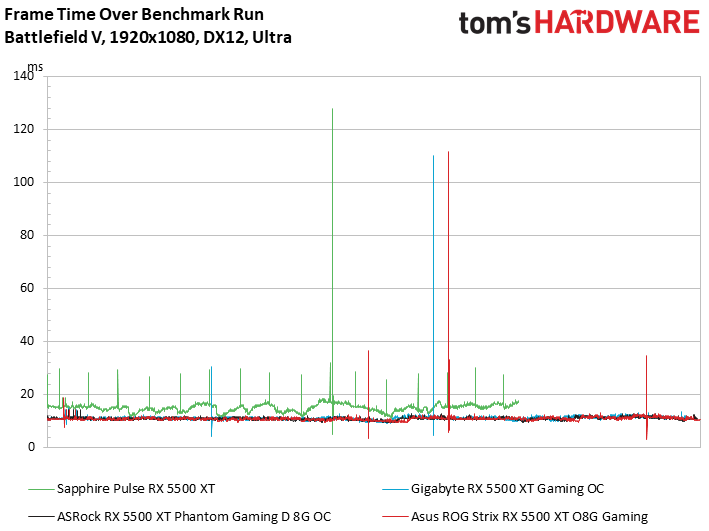
MORE: Best Graphics Cards
MORE: Desktop GPU Performance Hierarchy Table
MORE: All Graphics Content
Get Tom's Hardware's best news and in-depth reviews, straight to your inbox.
Current page: Performance Results: 1920 x 1080 (Ultra)
Prev Page Features and Specifications Next Page Performance Results: 1920 x 1080 (Medium)
Joe Shields is a staff writer at Tom’s Hardware. He reviews motherboards and PC components.